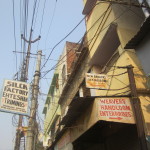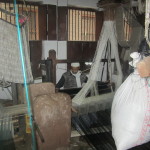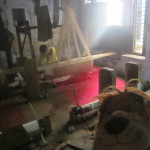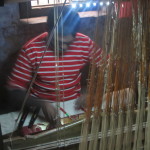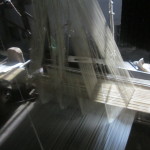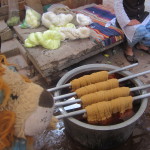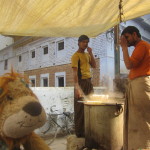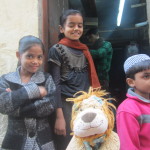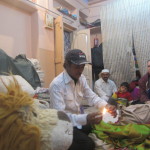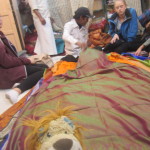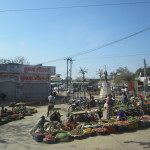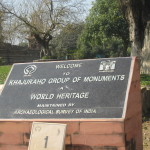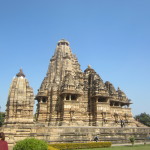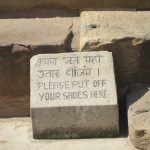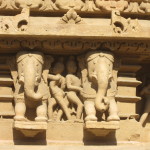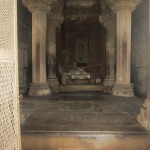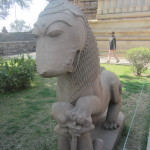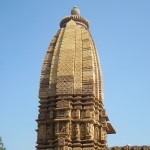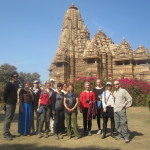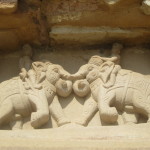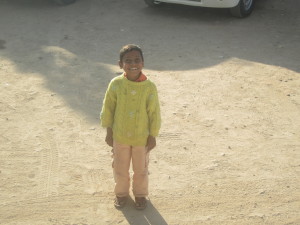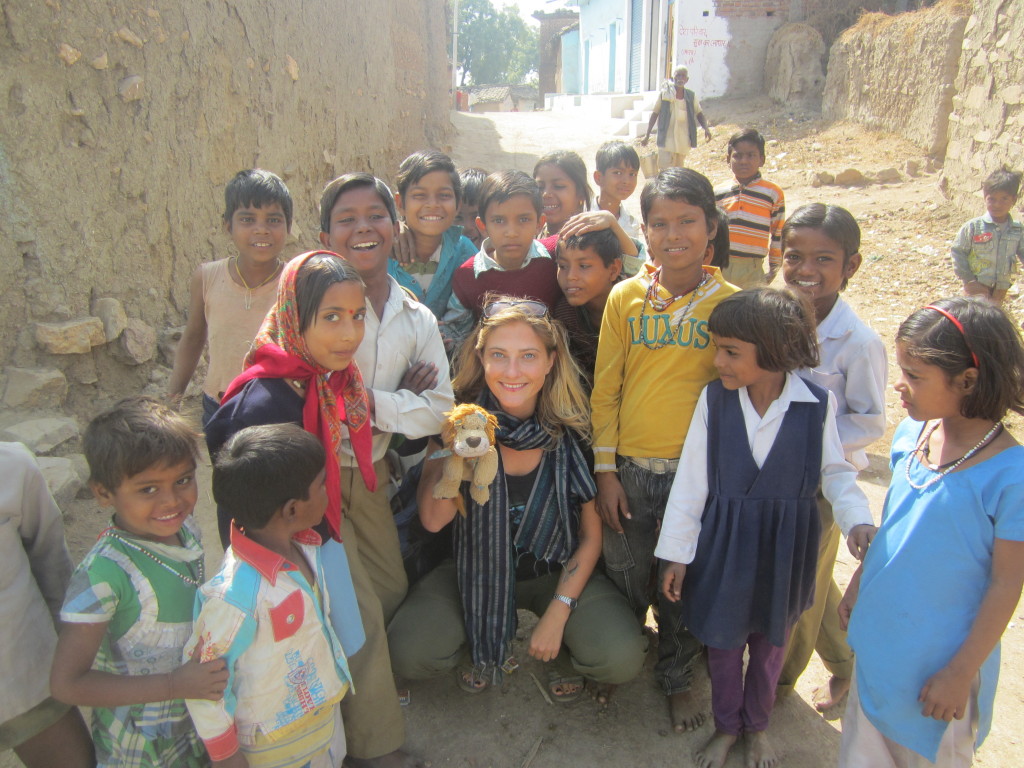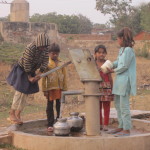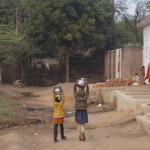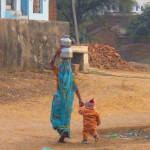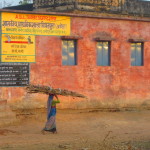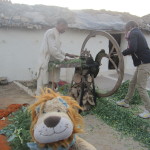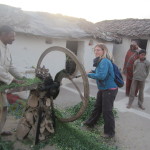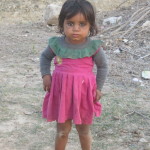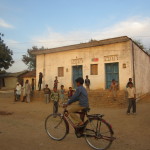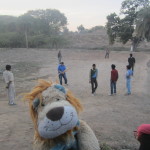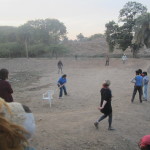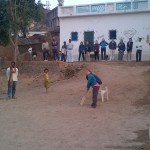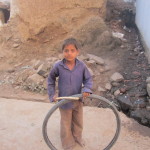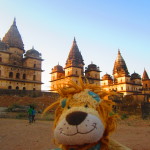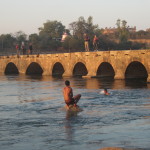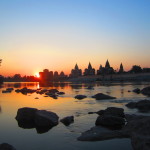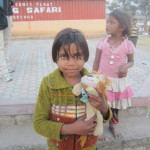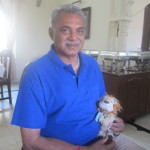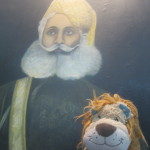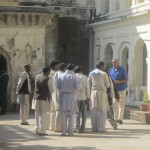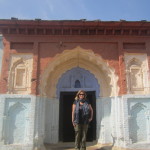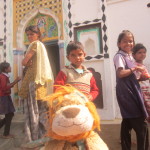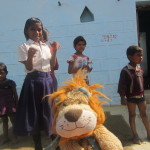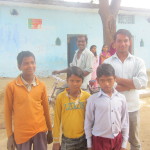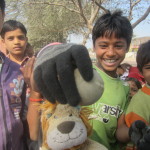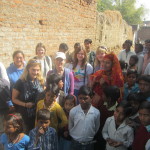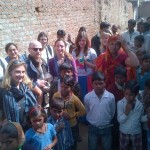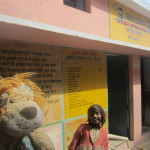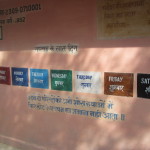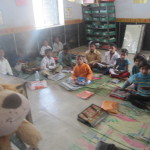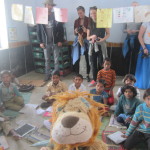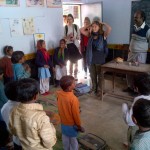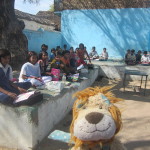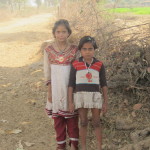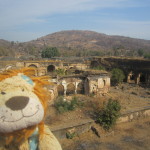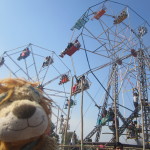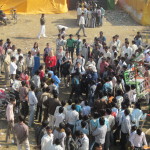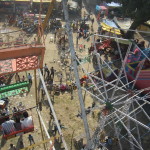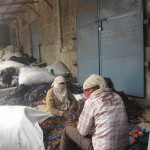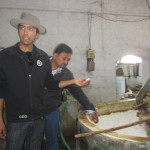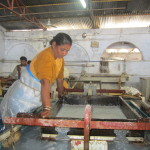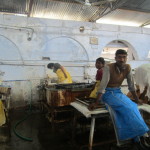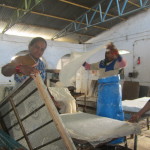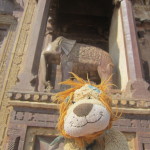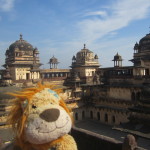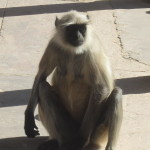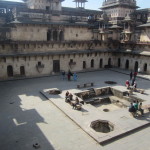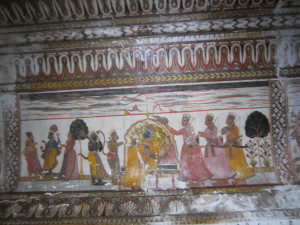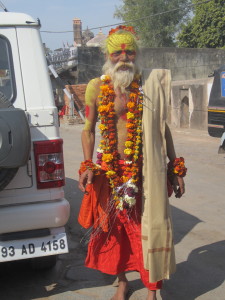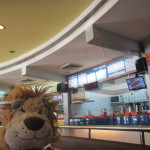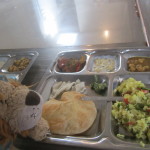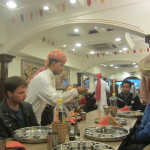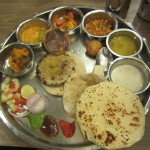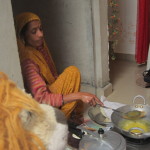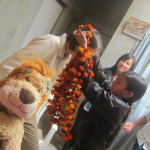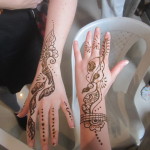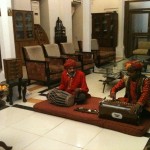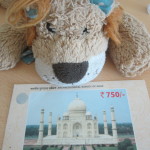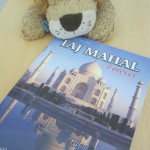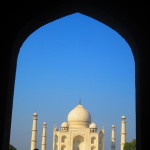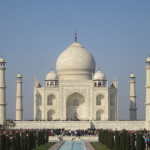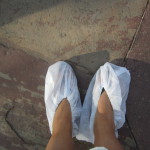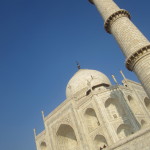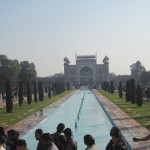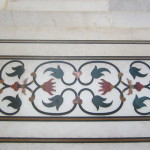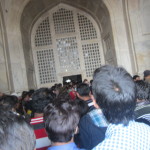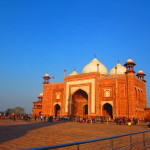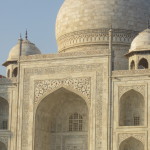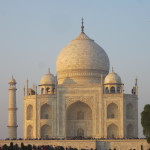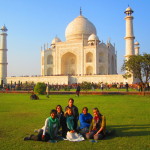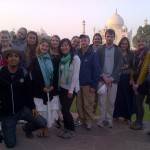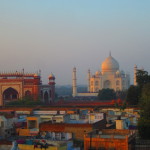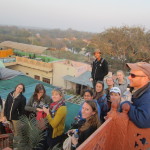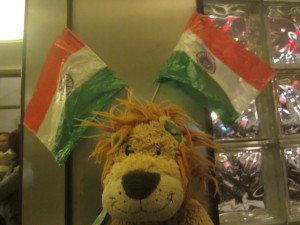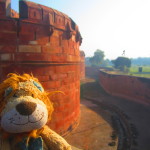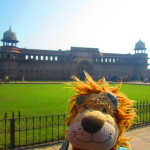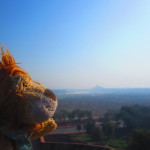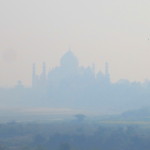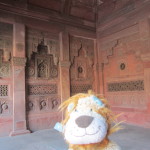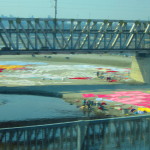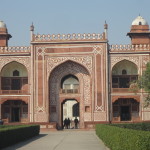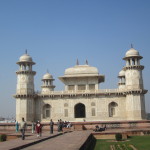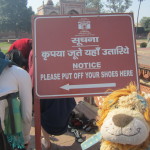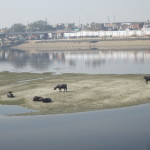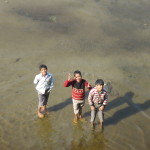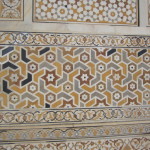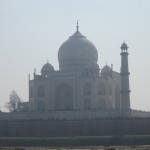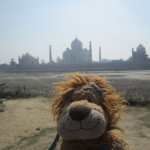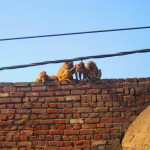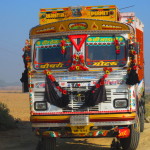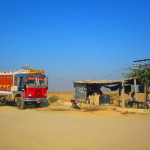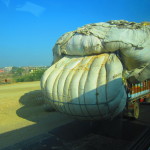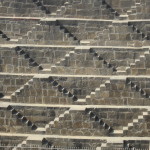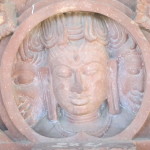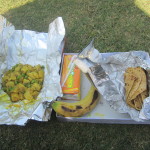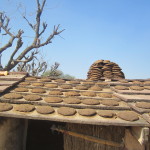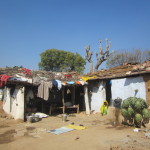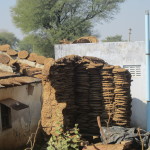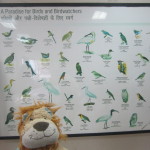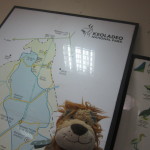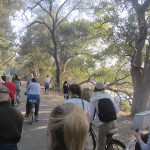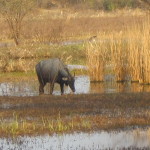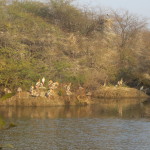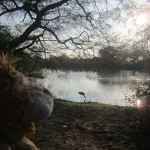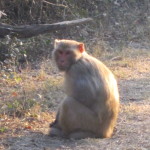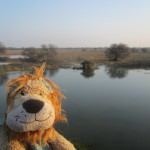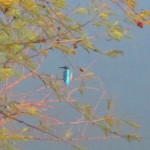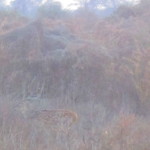-
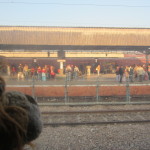
-
Watching the waiting passengers
-
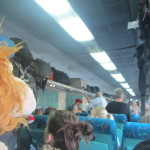
-
Lewis boards the train
-
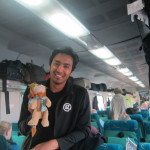
-
Dushyant and Lewis the Lion board the train to Jhansi
-
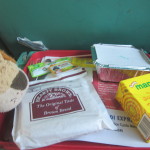
-
An Indian breakfast on the train
-
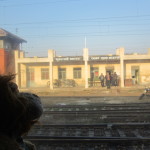
-
The Indian railways is a huge employer
-
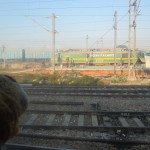
-
Lewis the Lion on the Indian Railways
-
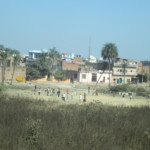
-
Whizzing past fields of cricketers
-
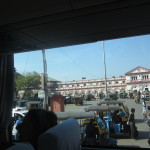
-
Jhansi Station – with the tuk-tuks waiting!
It was a very early start the following morning, as Lewis the Lion and his friends had to catch the train to Jhansi. Even though he was feeling extremely tired, (it had taken him ages to fall asleep the night before, probably due to the excitement of seeing the Taj Mahal!) he was happy to be experiencing his first trip on the famous Indian Railways. The Indian Railways is one of the biggest rail networks in the world, comprising 115,000 km of track over a 65,000 mile route with 7,500 stations. It is no wonder then that it the ninth biggest employer in the world, employing more than 1.4 million employees! Lewis the Lion couldn’t quite believe that these railways carry as many as 24 million passengers a day!
As he boarded the train and found his seat reservation, he marvelled at the efficiency of the service. He had barely taken his seat when a waiter had approached handing out trays with breakfast. It was more efficient than any aeroplane he’d ever travelled on, that’s for sure!
Picking up speed the train, Lewis the Lion gazed out of the window, taking in the view. On many occasions they whizzed past fields of children or men playing cricket – this was clearly India’s top sport. However, it wasn’t long before Lewis the Lion was lulled into sleep with the even rocking of the train, his head filled with huge numbers! Two and a half hours later, he disembarked the train at Jhansi station to get on yet another coach, this time on his way to Orccha.
However, this wasn’t to be Lewis the Lion’s only experience on the Indian Railways: another adventure still awaited as a few days later on, he had to take an overnight, sleeper train to the Indian holy city of Varanasi.
At first he and his friends waited together in station before it was time to board the train. They had to stick together as it wasn’t altogether safe at the station, late at night. He whiled away the time by playing ‘Pop words,’ a word game app on Helen’s phone – a bit like the board game ‘Boggle’. Do you know it? Helen bought them some snacks for breakfast: a couple of samosas, a mini-pizza and some mango juice.
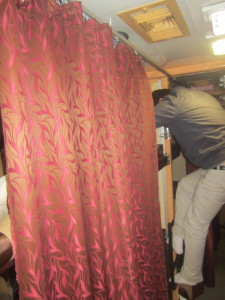
Step ladders are used to get into your compartment
Boarding the overnight train was certainly an experience. He found himself in a 3-tier AC compartment on the top bunk! That meant that Helen had to climb up some high step ladders to get up to the top-level. It was therefore very tricky to make your bed (as the travellers had been given some sheets and a pillow). Lewis the Lion was therefore very grateful when Dushyant, who is very tall, offered to help the rather vertically challenged, Helen and made their bed for them. Lewis the Lion thought that that was very kind.
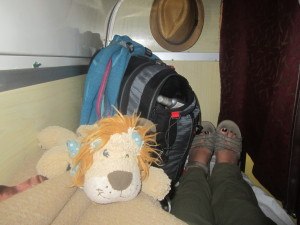
Settling in for the night on the 3rd bunk up!
Lewis the Lion didn’t feel altogether comfortable on the sleeper train – he’d heard bad stories of people having their things stolen on these overnight trains and so Helen made sure that she kept her small rucksack with her valuables close by. They made sure that they pulled the curtain right across to help block out the light so that they could try to sleep. Their sleeping compartment was close to the door of the carriage so there seemed to be constant comings and goings throughout the night. Lewis the Lion’s sleep felt very broken as it was stop, start, stop, start but eventually, it was OK and he did drop off to sleep. And really…in spite of the horror stories, it wasn’t as bad as all that. He arrived in Varanasi the next morning safe and sound, along with his travelling companions.
Lewis the Lion’s mother’s wise words rang around in his head:
‘What’s the point of worrying about something that might never happen to you?”
Honestly, he felt a bit foolish for wasting his energy on worrying about what turned out to be a great train journey across India.
Have you ever worried about something when everything turned out to be OK in the end? What happened? Do you think you would feel the same way the next time around?

